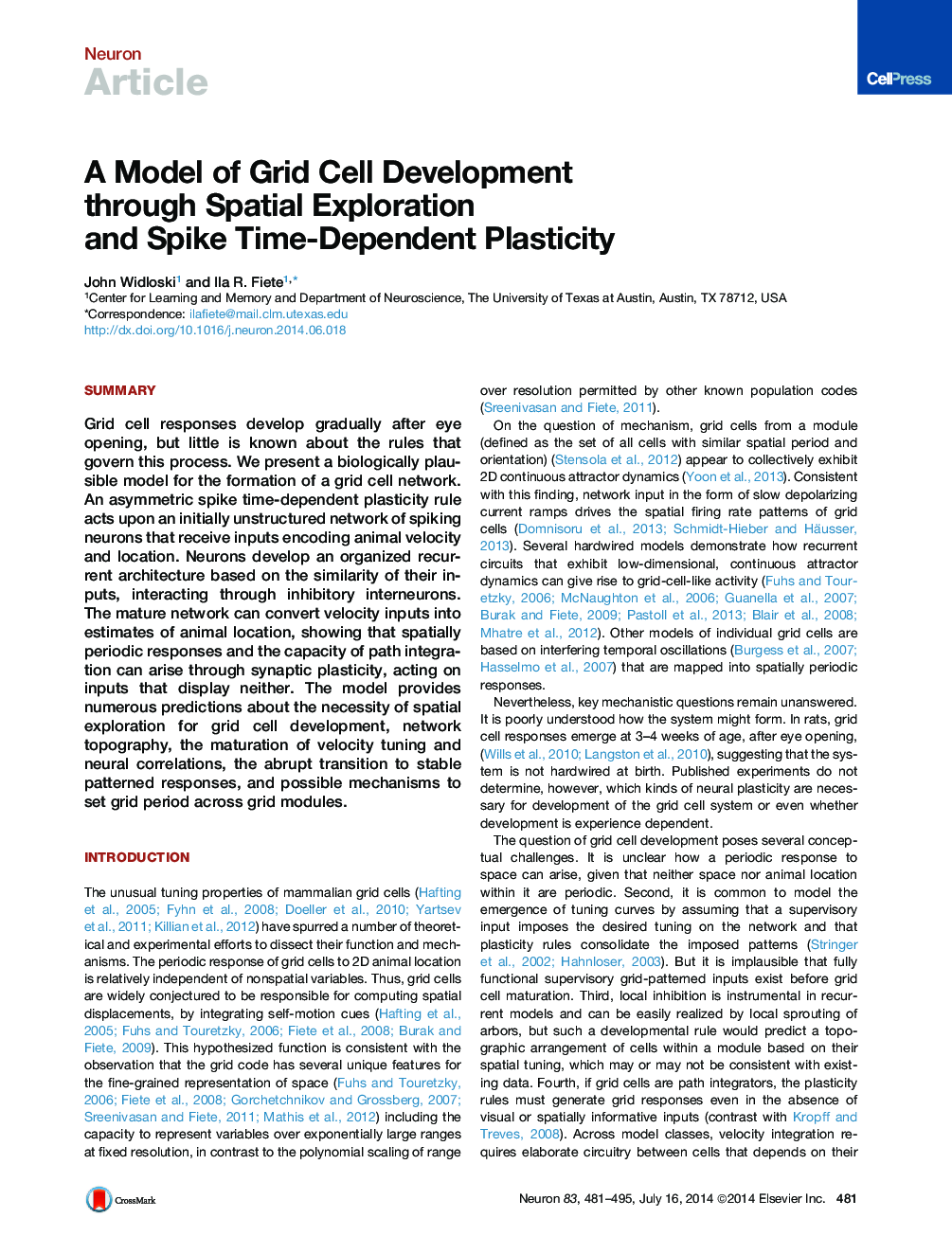| Article ID | Journal | Published Year | Pages | File Type |
|---|---|---|---|---|
| 4321042 | Neuron | 2014 | 15 Pages |
•STDP can give rise to the strikingly periodic spatial responses of grid cells•The mature network is capable of path integration, unlike its training inputs•Predicts possible mechanisms underlying different grid periods•Predicts time course of correlations and abrupt patterning over development
SummaryGrid cell responses develop gradually after eye opening, but little is known about the rules that govern this process. We present a biologically plausible model for the formation of a grid cell network. An asymmetric spike time-dependent plasticity rule acts upon an initially unstructured network of spiking neurons that receive inputs encoding animal velocity and location. Neurons develop an organized recurrent architecture based on the similarity of their inputs, interacting through inhibitory interneurons. The mature network can convert velocity inputs into estimates of animal location, showing that spatially periodic responses and the capacity of path integration can arise through synaptic plasticity, acting on inputs that display neither. The model provides numerous predictions about the necessity of spatial exploration for grid cell development, network topography, the maturation of velocity tuning and neural correlations, the abrupt transition to stable patterned responses, and possible mechanisms to set grid period across grid modules.
